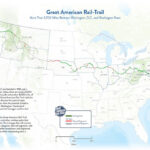For enthusiasts diving into the thrilling world of American club racing, two bike categories consistently dominate starting grids: the nimble SV650s and the powerful 600cc inline-fours. While these machines compete in separate classes, the skills honed on an SV650 are remarkably transferable and beneficial, especially when your sights are set on mastering a Gsxr Bike.
The Suzuki SV650 has earned its reputation as a premier starter bike for track day aficionados and budding club racers. It provides an ideal balance – enough power to deliver exhilarating speed, yet forgiving enough to demand the refinement of crucial track riding techniques. Unlike more potent 600cc sportbikes, an SV650 doesn’t allow you to solely rely on brute force for speed. To truly excel on an SV, riders must master the art of carrying maximum momentum through corners, executing precise turns, and getting back on the throttle with finesse.
While a GSXR bike or similar 600cc machine can compensate for less-than-perfect corner entry speed with sheer horsepower on exit, the SV650 leaves no room for such shortcuts. This necessity becomes its greatest strength. It compels riders to learn and internalize advanced techniques – skills that are not only essential for extracting maximum performance from an SV but are also the final, crucial layers of mastery on any high-performance motorcycle, including a GSXR bike. Roping the throttle on corner exit is rudimentary; carrying blistering corner speed demands courage, precision, and a refined skillset – the very skills the SV650 cultivates.
Alt text: Rider skillfully cornering an SV650 track bike, demonstrating techniques applicable to GSXR bike handling.
Interestingly, a significant portion of club racers, particularly those transitioning to or aspiring to ride a GSXR bike, choose the SV650 as their training ground. The practicality extends beyond just handling; many components of the SV650 are interchangeable with a GSXR bike. This commonality makes sourcing parts easier and more budget-friendly, a significant advantage for racers. For instance, while the stock SV650 front forks have limited adjustability, a popular and straightforward upgrade is swapping them with GSXR forks, which offer enhanced adjustability and a direct fit. However, it’s worth noting that such modifications might affect class eligibility in certain racing events. The SV650’s popularity is so profound it even boasts its own dedicated race class at prestigious events like the annual Suzuki Cup.
Alt text: Upgraded GSXR forks installed on an SV650, a common modification highlighting parts compatibility between SV and GSXR bikes.
Another compelling advantage of the SV650, particularly for track enthusiasts, is tire economy. Tires represent a substantial ongoing expense for track day regulars and racers. The SV650 utilizes a narrower 160-170 rear tire compared to the 180 or 190 typically found on 600cc and larger bikes. These smaller tires are not only less expensive but also last longer due to the SV650’s more manageable power output. While riders on 600cc and 1000cc GSXR bikes might replace tires after a single race weekend, SV650 riders often get two race weekends from a set. For track days, an SV650 can easily provide 3-5 sessions on a set of street-oriented tires, especially beneficial for riders still in the learning phase. The frustration of prematurely worn rear tires while the front remains in good condition is also mitigated, further saving costs and maximizing tire sets.
If the aesthetics of a stock SV650 are not immediately appealing, a quick search for SV650s in race trim will likely change your perspective. These bikes, stripped down and purpose-built for the track, possess an undeniable visual appeal. Another common concern is whether starting on a V-twin SV650 might hinder the transition to an inline-four 600 like a GSXR bike. The reality is quite the opposite, especially regarding shifting techniques. Shifting while leaned over, under power, and at speed is a crucial skill on the track. While some may find it initially awkward, mastering it is essential for optimal lap times, particularly on tracks demanding mid-corner gear changes. The SV650, with its torquey V-twin engine, necessitates frequent shifting, naturally forcing riders to become proficient at shifting in leaned-over scenarios – a skill that translates seamlessly and advantageously when stepping up to a GSXR bike or any 600cc machine.
While personal preferences and brand loyalties always play a role (as the author mentions sticking with a GSXR 600 after a crash), the Suzuki SV650 stands out as an exceptional stepping stone for track riders aspiring to master larger, more powerful bikes like the GSXR. It’s a platform that cultivates fundamental skills, offers practical benefits in parts and tire costs, and ultimately enhances a rider’s overall track proficiency, making the eventual transition to a GSXR bike smoother and more rewarding.
Alt text: A GSXR 600 bike leaned over on a racetrack, representing the advanced machines riders often progress to after mastering skills on bikes like the SV650.
Ultimately, engaging with diverse opinions and experiences is invaluable. Absorb the information, discern what resonates with you, discard what doesn’t, and trust your instincts as you navigate your own path in the exhilarating world of track riding and GSXR bikes.


